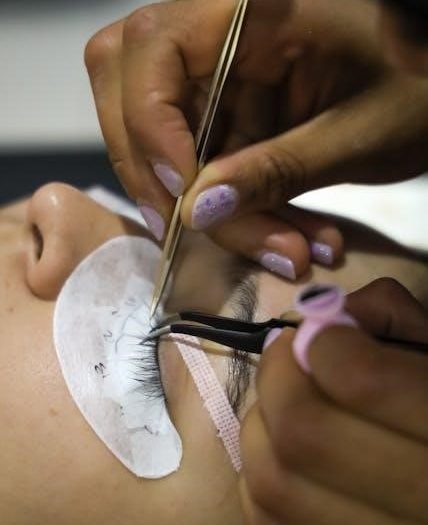Lash Manual: A Comprehensive Guide
If you’ve ever dreamed of waking up with stunning, voluminous lashes without the need for makeup, eyelash extensions are the perfect solution. This guide provides a comprehensive overview of lash extension techniques, tips, and aftercare;
Eyelash extensions have revolutionized the beauty industry, offering a way to achieve longer, fuller, and more dramatic lashes without the daily application of mascara. Unlike DIY party lashes that last a day, extensions involve a meticulous process where a technician uses a strong, professional adhesive to attach synthetic strands to your natural lashes.
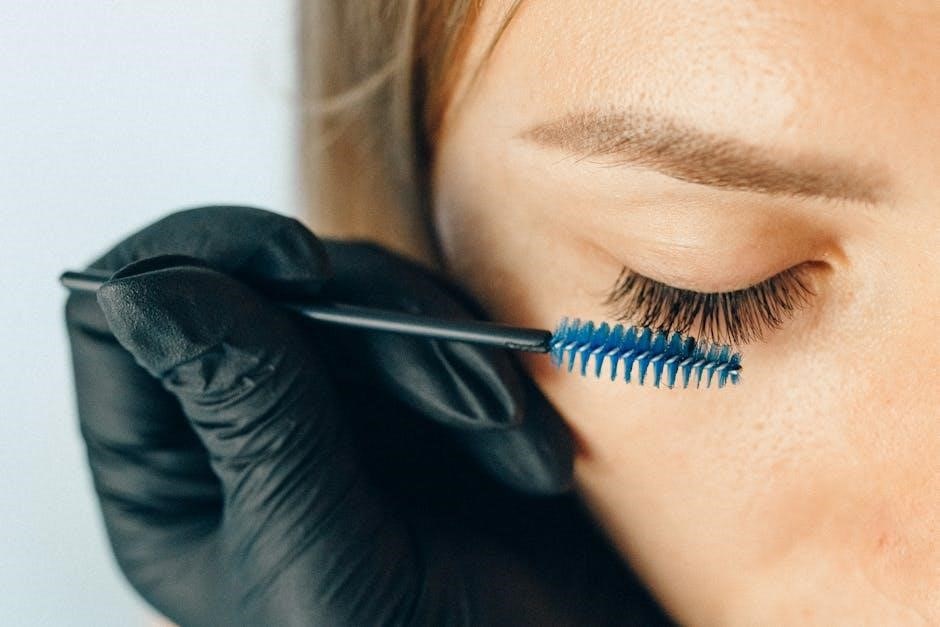
This semi-permanent treatment enhances your natural beauty, giving you a wide-eyed, glamorous look that lasts for weeks. Extensions are not just a technique but an art, requiring precision and skill to ensure they are applied safely and effectively. This comprehensive guide is for beginners to understand from lash extensions to finding skilled technicians.
Understanding Lash Extension Techniques
Mastering eyelash extension techniques is essential for achieving the desired look. There are four major approaches: Classic, Volume, Mega Volume, and Hybrid. Each technique offers a different level of fullness and drama, allowing you to customize your lash look to suit your style and preferences.
Classic lash extensions involve applying a single extension to each natural lash, enhancing length and definition for a natural yet enhanced appearance. Volume lash extensions use multiple thinner lashes, creating a fuller and more voluminous effect. Hybrid extensions combine classic and volume lashes for a balanced look, while Mega Volume extensions provide maximum impact with the densest lash application.

Classic Lash Extensions: The Natural Look
Classic lash extensions are often called the 1:1 method because it involves attaching one false eyelash to one natural lash. The application process involves isolating each natural lash and delicately attaching a single extension. This meticulous technique ensures the extensions blend seamlessly with your natural lashes, enhancing length and definition for a subtle, yet noticeable, improvement.
Classic lash extensions are perfect for those seeking a natural look that enhances their existing lashes without adding excessive volume. This technique is ideal for individuals with a good amount of natural lashes who desire added length and a more defined lash line. It’s best to stick to thinner classic techniques.
Volume Lash Extensions: Achieving Fuller Lashes
Volume lash extensions involve applying multiple lightweight extensions, crafted into a fan, to each natural lash. This technique creates a fuller, more voluminous lash line compared to classic extensions; Placement is crucial when applying volume lash extensions to avoid damaging the natural lash. The extensions must be placed evenly and securely.
Volume lashes are ideal for those with sparse natural lashes or those who desire a more dramatic look. These lash extensions are perfect for adding density and fullness, creating a noticeable difference. Mastering the volume lashes technique, from basics to perfect placement, is key to achieving stunning results.
Hybrid Lash Extensions: Combining Classic and Volume
Hybrid lash extensions offer a balanced approach, combining the natural look of classic lashes with the added volume of volume lashes. This technique involves strategically placing individual classic lashes alongside volume fans to create a textured and dimensional effect. They all view eyelash extensions not just as a technique but an art.
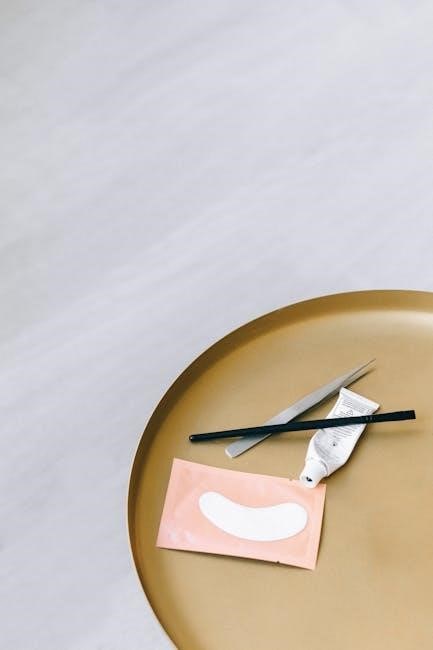
Hybrid lashes are perfect for clients who want more fullness than classic extensions but without the intensity of full volume. By blending different lash types, technicians can customize the look to suit individual preferences and eye shapes. Stick to thinner hybrid techniques and avoid overly long or thick extensions to maintain a natural appearance.
Mega Volume Lash Extensions: Maximum Impact
Mega volume lash extensions take fullness to the next level, creating a dramatic and bold look. This technique involves applying ultra-fine volume fans, typically consisting of more than six lashes per fan, to each natural lash. Placement is crucial when applying volume lash extensions.
Mega volume lashes are ideal for clients who desire maximum impact and a noticeable transformation. Due to the increased weight of the extensions, it’s essential to ensure the natural lashes are strong and healthy enough to support them. A skilled technician will carefully assess lash health and apply the appropriate number of extensions to avoid damage.
Essential Tools and Materials
Achieving flawless lash extensions requires a comprehensive set of essential tools and high-quality materials. Precision is paramount, so invest in fine-tipped tweezers for isolating natural lashes and applying extensions with accuracy. Eyelash extension glue is a crucial component, ensuring a strong and lasting bond between the extension and the natural lash. Opt for a professional-grade adhesive with low fumes to minimize irritation.
Lash extensions themselves come in various lengths, thicknesses, and curls, allowing for customization to suit each client’s preferences. Other necessities include an oil-free cleanser for prepping the lashes, gel pads or tape for securing lower lashes, a lash primer to enhance adhesion, and a lash sealant to prolong the life of the extensions. A lash mirror is also helpful for checking your work.
Step-by-Step Application Guide

Mastering eyelash extension application requires precision and patience. Start by thoroughly cleansing the client’s natural lashes with an oil-free cleanser to remove any makeup or debris. Next, secure the lower lashes with gel pads or tape to prevent them from adhering to the upper lashes. Use fine-tipped tweezers to isolate one natural lash at a time. Dip the base of the chosen extension into a small amount of lash adhesive, ensuring not to overload the glue.
Carefully attach the extension to the isolated natural lash, positioning it 0.5-1mm away from the lash line. Hold the extension in place for a few seconds to allow the adhesive to set. Repeat this process, methodically applying extensions across both eyes, balancing the lash set for a uniform and symmetrical look. Regularly check your work using a lash mirror.
Preparing the Client’s Lashes
Proper preparation is crucial for successful eyelash extension application. Begin by conducting a thorough consultation with the client to discuss their desired look and assess their natural lash health. Ask about any allergies or sensitivities they may have. Ensure the client removes all eye makeup before the appointment.
Using an oil-free cleanser, gently clean the client’s lashes to remove any residual oils, dirt, or makeup. A lash shampoo is ideal for this step. Rinse thoroughly with distilled water and pat dry with a lint-free cloth. Next, apply a protein remover or primer to further cleanse the lashes and optimize adhesion. Finally, brush through the lashes with a clean mascara wand to separate and align them, creating a clean canvas for extension application. This meticulous preparation ensures optimal retention and client satisfaction.
Isolating Natural Lashes
Isolating natural lashes is a critical step in the eyelash extension process, demanding precision and patience. Using curved or angled isolation tweezers, gently separate a single natural lash from its neighbors. The goal is to create a clean, unobstructed workspace for applying the extension. Ensure the isolated lash is free from any tangles or surrounding lashes.
Maintain a firm but gentle grip on the isolation tweezers to avoid causing discomfort to the client. Proper lighting is essential for clear visibility during isolation. If the client’s lashes are particularly dense or unruly, consider using a lash separator tool to aid in the process. Re-isolate the lash as needed throughout the application to maintain a clean working field. Mastering this technique is crucial for achieving a flawless and long-lasting lash extension set. Remember, clean isolation prevents stickies and promotes healthy lash growth.
Applying the Extensions
With the natural lash isolated, the next crucial step is applying the extension. Dip the base of the lash extension into a small amount of lash adhesive, ensuring only the very base is coated. Avoid excessive glue, which can lead to clumping and poor adhesion. Gently slide the extension onto the isolated natural lash, positioning it approximately 0.5-1mm away from the eyelid to prevent irritation.
Ensure the extension is securely attached and aligned with the natural lash. Release the isolated lash and allow the adhesive to dry. Repeat this process for each lash, working methodically across the lash line. Use a lash mirror to check your work and ensure proper placement and alignment. Pay close attention to the angle and direction of each extension to create a uniform and natural-looking set. Consistency is key for achieving a professional finish.
Balancing the Lash Set
Once the extensions are applied, balancing the lash set is essential for a cohesive and aesthetically pleasing look. This involves assessing the overall symmetry, density, and length distribution across both eyes. Carefully examine the lash line to identify any gaps or inconsistencies. Fill in sparse areas with additional extensions, ensuring they match the length and curl of the surrounding lashes.
Pay attention to the inner and outer corners, adjusting the length and density to create a natural taper. Use a lash brush to comb through the extensions, separating any that may have stuck together. Observe the overall shape and make any necessary adjustments to achieve the desired style, whether it’s a cat eye, natural, or open eye look. A balanced lash set enhances the eyes and creates a polished, professional result.
Lash Mapping and Styling
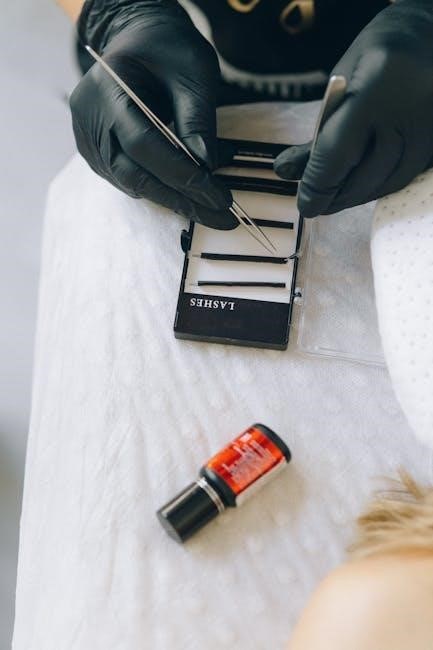
Lash mapping is the art of strategically planning the length, curl, and thickness of eyelash extensions to create a desired style. It involves using a diagram to map out the different sections of the lash line, indicating the specific extensions to be applied in each area. This technique ensures a balanced and symmetrical look that enhances the client’s unique eye shape.
Different lash styles can be achieved through lash mapping, such as the cat eye, which elongates the outer corners, or the open eye, which focuses on the center. By carefully considering the client’s preferences and facial features, a skilled lash technician can customize the lash map to create a flattering and personalized result. Lash mapping is essential for achieving consistent and beautiful lash extensions.
Cat Eye Lash Style
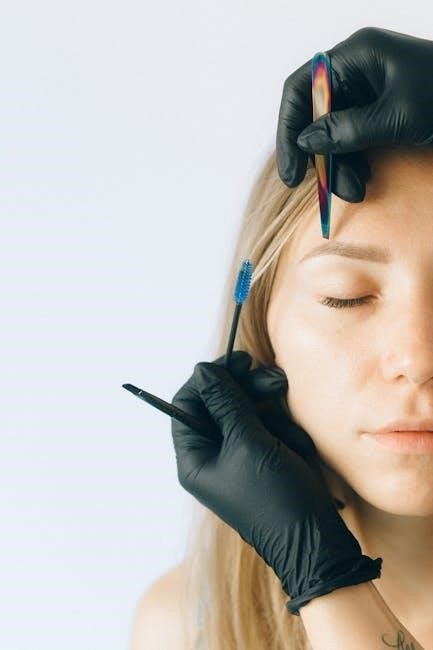
The cat eye lash style is a popular choice for those seeking a dramatic and elongated look. This style is achieved by gradually increasing the length of the lash extensions towards the outer corners of the eyes, creating a winged effect reminiscent of feline eyes. Shorter lengths are typically used in the inner corners to avoid overwhelming the face and to open up the eyes.
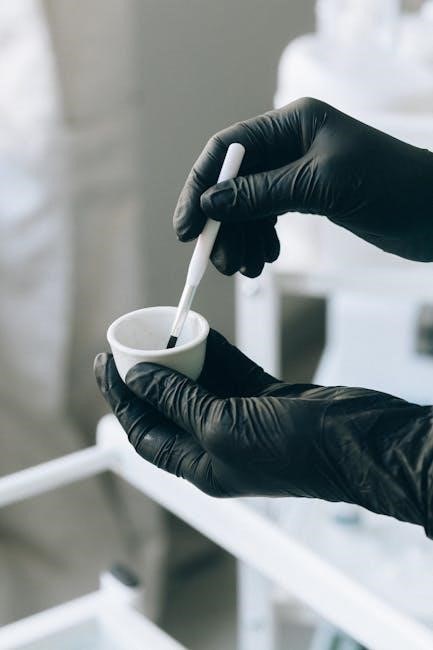
To create a cat eye lash style, begin with shorter lengths (7-10mm) in the inner corners, gradually increasing the length towards the outer corners (11-13mm or longer). The most extended lashes should be placed at the outer third of the eye, creating a lift and elongation. It’s important to maintain a smooth transition between lengths for a seamless and natural-looking result. This style is perfect for clients who want to enhance their eyes’ shape and add a touch of glamour.
Aftercare and Maintenance
Proper aftercare and maintenance are crucial for extending the life of your eyelash extensions and maintaining the health of your natural lashes. Following a consistent aftercare routine will help prevent premature shedding and ensure your lashes look their best for longer. Neglecting aftercare can lead to buildup, infections, and damage to both the extensions and your natural lashes.
One of the most important aspects of aftercare is gentle cleansing. Use an oil-free cleanser specifically formulated for eyelash extensions to remove dirt, debris, and makeup residue; Avoid rubbing or pulling on your lashes, as this can cause them to detach prematurely; It is also crucial to avoid oil-based products around the eye area, as oil can break down the adhesive and shorten the lifespan of your extensions. Regular brushing with a clean spoolie brush can help keep your lashes neat and prevent tangling.
Cleaning Eyelash Extensions
Cleaning your eyelash extensions is a crucial step in maintaining their longevity and preventing infections. Proper cleaning removes oil, dirt, and makeup residue that can accumulate and weaken the adhesive bond. Neglecting this step can lead to premature lash loss and potential eye irritation.
Use an oil-free cleanser specifically designed for eyelash extensions. These cleansers are gentle and won’t break down the adhesive. Apply a small amount of cleanser to a clean, soft brush or lint-free applicator. Gently brush along the lash line, ensuring you reach between the extensions to remove any buildup. Rinse thoroughly with water, making sure no cleanser remains. Pat your lashes dry with a clean, lint-free towel or allow them to air dry. Avoid rubbing or pulling on your lashes during the cleaning process. Clean your lashes at least once a day, or more often if you wear heavy makeup or engage in activities that cause sweating.
Avoiding Oil-Based Products
One of the most crucial aspects of maintaining your eyelash extensions and ensuring their longevity is avoiding oil-based products around your eyes. Oil is a natural enemy of the adhesive used to bond the extensions to your natural lashes, and it can significantly weaken the bond over time, leading to premature lash fallout.
Carefully examine the ingredients of all your skincare and makeup products, including cleansers, moisturizers, eye creams, and mascaras. Opt for oil-free alternatives whenever possible. When applying products around your eyes, be mindful of avoiding the lash line. Even if a product isn’t directly applied to your lashes, it can still migrate and affect the adhesive. Consider using a barrier product, such as a lash sealant, to protect the adhesive from oil exposure. By diligently avoiding oil-based products, you can extend the life of your eyelash extensions and keep them looking full and beautiful.
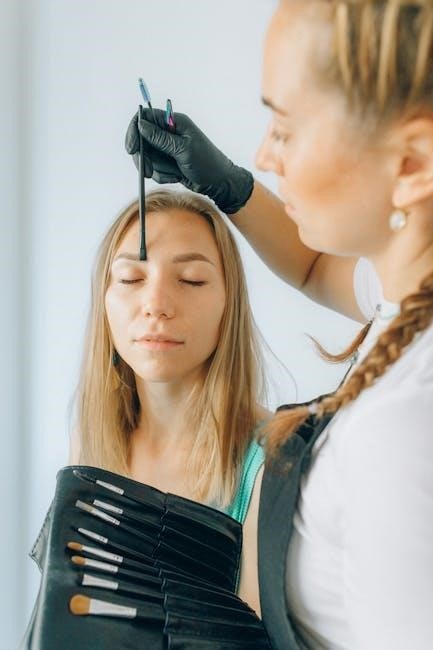
Do’s and Don’ts After Application
Following the correct aftercare is vital for maintaining the appearance and lifespan of your eyelash extensions. Here’s a quick rundown of the do’s and don’ts to keep in mind after your appointment.
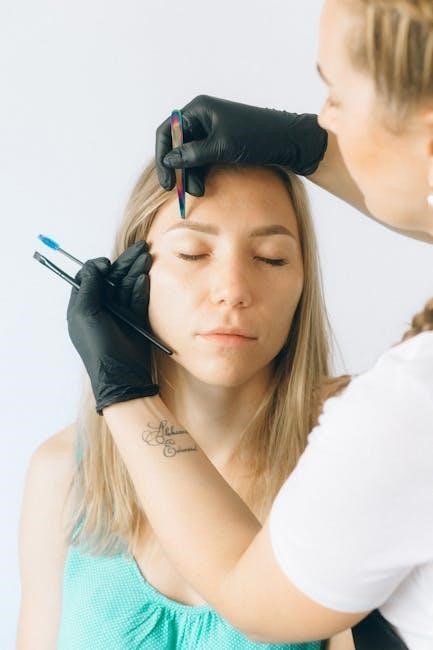
Do: Gently cleanse your lashes daily with an oil-free cleanser to remove dirt and debris. Use a lash brush to carefully comb through your lashes, keeping them neat and tidy. Sleep on your back to avoid crushing your lashes against your pillow. Don’t: Get your lashes wet for the first 24 hours after application. Rub or pull on your lashes, as this can cause them to fall out prematurely. Use oil-based products around your eyes. Apply mascara to your extensions, as it can be difficult to remove and damage the lashes. By following these simple guidelines, you can ensure your eyelash extensions stay beautiful for longer.
Finding a Skilled Lash Technician
Choosing the right lash technician is crucial for a safe and satisfactory eyelash extension experience. Look for a technician who is certified and has extensive training in eyelash extension application. A skilled technician views eyelash extensions not just as a technique but as an art. Check online reviews and ask for recommendations from friends or family. Ensure the technician uses salon-grade products and follows strict hygiene protocols to minimize the risk of infection. Ask to see before-and-after photos of their work to gauge their skill and aesthetic style. A good technician should also be able to assess your natural lashes and recommend the best type and style of extensions for you. Don’t hesitate to ask questions about their experience and techniques to ensure you feel comfortable and confident in their abilities.
Troubleshooting Common Issues
Even with the best application, some issues may arise with eyelash extensions. One common problem is premature lash shedding. This can be due to various factors, including improper aftercare, oil-based products, or natural lash growth cycles. If you experience excessive shedding, consult your lash technician for advice. Another issue is allergic reactions, which can cause redness, itching, or swelling. If you suspect an allergy, remove the extensions immediately and seek medical attention. Sometimes, extensions may become twisted or tangled; Gently brush them with a clean mascara wand to detangle them. If the problem persists, schedule a maintenance appointment with your technician. In rare cases, improper application can lead to damage to natural lashes. To prevent this, always choose a skilled technician and follow their aftercare instructions carefully. Remember, addressing issues promptly can help maintain the health and appearance of your lashes.
